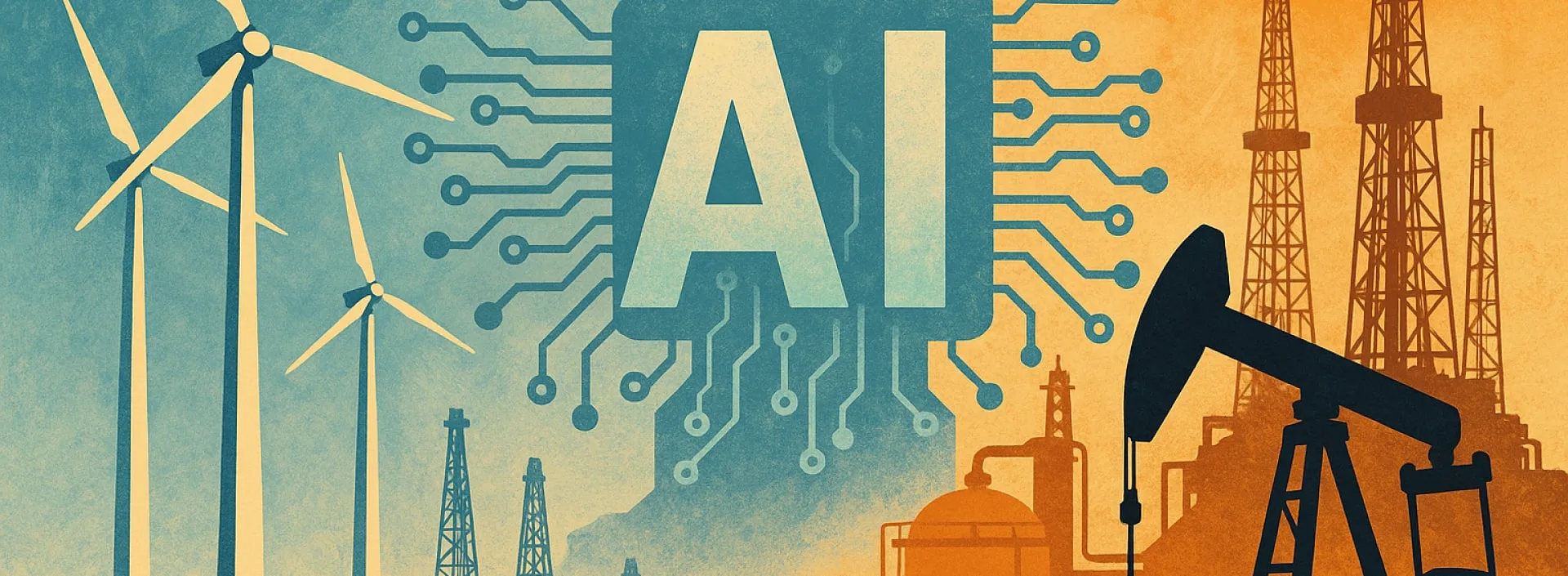AI-Driven Transformation: Enhancing Oil and Gas Operations for Environmental Sustainability

Introduction to AI-Driven Transformation
The oil and gas industry, a cornerstone of global energy, faces mounting pressure to balance operational efficiency with environmental responsibility. As climate concerns intensify and regulations tighten, companies are turning to artificial intelligence (AI) to optimize operations, reduce costs, and minimize ecological footprints. From predictive maintenance to real-time emissions monitoring, AI is proving to be a transformative force. This blog explores how AI-driven innovations are reshaping oil and gas operations while advancing environmental sustainability.
1. AI in Oil and Gas Operations: Boosting Efficiency and Precision
The integration of AI in oil and gas operations is revolutionizing every phase of the industry—upstream, midstream, and downstream. By leveraging machine learning, computer vision, and IoT sensors, companies are unlocking unprecedented levels of efficiency.
Upstream Innovation: Smarter Exploration and Drilling
In upstream operations, AI accelerates exploration by analyzing seismic data to identify optimal drilling locations. For example, ExxonMobil uses machine learning algorithms to process petabytes of geological data, reducing exploratory risks and cutting drilling time by 30%.
Similarly, Shell employs AI-powered drones to inspect offshore rigs, improving safety and slashing inspection costs by [25%].
Predictive Maintenance: Minimizing Downtime
Unplanned equipment failures cost the industry billions annually. AI-driven predictive maintenance uses sensor data to forecast machinery issues before they occur. According to a McKinsey report, predictive analytics can reduce downtime by up to 20% and maintenance costs by 15%. For instance, Chevron uses AI models to monitor pipeline integrity, preventing leaks and saving an estimated $500 million annually.
Supply Chain Optimization
AI streamlines logistics by predicting demand fluctuations and optimizing delivery routes. BP implemented an AI-driven inventory management system, reducing surplus stock by 15% while ensuring timely equipment availability.
2. Reducing Environmental Impact with AI
Environmental accountability is no longer optional for oil and gas companies. AI provides actionable tools to reduce emissions, monitor ecosystems, and transition toward cleaner energy.
Methane Leak Detection
Methane, a potent greenhouse gas, accounts for nearly 30% of global warming. Traditional leak detection methods are slow and labour-intensive. AI-powered solutions like BP’s satellite-based methane monitoring system, developed with Environmental Defence Fund, detect leaks 60% faster. Similarly, Shell’s AI-driven sensors reduced methane emissions by 50% in its Permian Basin operations.
Carbon Capture and Storage
AI optimizes CCS projects by identifying ideal storage sites and modelling CO2 flow. The International Energy Agency (IEA) notes that AI-enhanced CCS could improve efficiency by 35%, making it a viable tool for decarbonization. Equinor’s Northern Lights project uses machine learning to predict reservoir behaviour, ensuring long-term CO2 storage safety.
Renewable Energy Integration
As the industry diversifies into renewables, AI balances hybrid energy grids. TotalEnergies employs AI to forecast solar and wind output, seamlessly integrating them with traditional energy systems. This approach reduced grid instability by 20% in its European operations.
3. Balancing Profitability and Sustainability
AI bridges the gap between profitability and sustainability, enabling companies to meet ESG (Environmental, Social, Governance) goals without sacrificing margins.
Energy Efficiency in Refining
Refineries consume vast amounts of energy. AI-driven HVAC and process optimization systems, like those deployed by Siemens Energy, cut energy use by 25% in a Texas-based facility, saving $4 million annually.
Regulatory Compliance
Strict environmental regulations require real-time monitoring. Chevron’s AI compliance platform analyzes emissions data across 500 sites, reducing violations by 40% in 2023. Similarly, Saudi Aramco uses AI to automate emissions reporting, ensuring adherence to Paris Agreement targets.
Attracting ESG Investors
Investors increasingly favour firms with strong sustainability records. A Deloitte study found that AI-driven sustainability initiatives boost investor confidence, with ESG-aligned companies securing 15% more funding than peers.
4. Challenges and the Road Ahead
While AI offers immense potential, its adoption faces hurdles:
Data Quality and Integration
Legacy systems often produce fragmented data. Petrobras tackled this by deploying AI to clean and standardize decades of drilling data, improving model accuracy by 50%.
Workforce Adaptation
Upskilling employees is critical. TotalEnergies trained 10,000 workers in AI basics in 2023, fostering a tech-savvy workforce.
Ethical AI and Bias
Ensuring fairness in AI decision-making remains a challenge. The World Economic Forum advocates for transparent AI frameworks to prevent biases in resource allocation.
Future Trends
Autonomous Drilling Rigs: Companies like Halliburton are testing AI-powered rigs that operate with 90% less human intervention.
AI-Powered Carbon Trading: Startups like Cloverly use machine learning to optimize carbon credit purchases.
Global AI Standards: The OECD is developing guidelines for ethical AI use in energy.
Conclusion
Artificial Intelligence (AI) is no longer a distant vision of the future—it has become a strategic imperative for the oil and gas industry today. As the sector navigates growing pressures to improve efficiency, reduce costs, and meet environmental, social, and governance (ESG) expectations, AI stands out as a powerful enabler of transformation. From predictive maintenance and real-time analytics to emissions monitoring and carbon footprint reduction, AI-driven solutions are already demonstrating their value across the energy value chain.
Embracing AI not only enhances operational performance but also supports the industry’s transition toward a more sustainable, low-carbon future. It enables companies to make data-driven decisions, reduce environmental impact, and ensure compliance with evolving regulations—all while remaining competitive in an increasingly decarbonized global economy.
However, realizing the full potential of AI requires more than just technological investment. It calls for robust collaboration among technology providers, policymakers, regulators, and industry leaders. By fostering cross-sector partnerships, encouraging responsible data practices, and aligning on shared goals, the oil and gas industry can scale AI innovations in a way that drives both economic and environmental progress.
The path ahead is complex but promising—and those who act decisively will shape the future of energy.